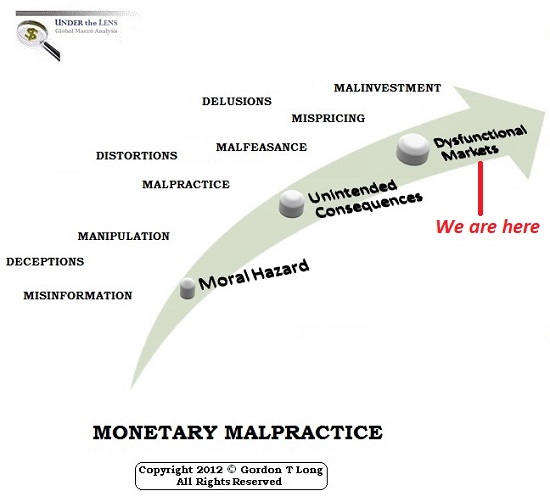There is a downside to steel reinforcing bars: they rust. The second most remarkable thing about the sudden collapse of the Florida condo building was the rush to assure everyone that this was a one-off catastrophe: all the factors fingered as causes were unique to this building, the implication being all other high-rise reinforced concrete condos without the exact same mix of causal factors were not in danger. Before we accept this conveniently feel-good conclusion, there are a few things we should consider about reinforced concrete high-rise condos. 1. This may seem too obvious to be important, but concrete is a heavy material. Fill a 5-gallon bucket with wet concrete, let it cure (harden) and then pick the bucket up–if you can. 2. Conventional concrete is not
Topics:
Charles Hugh Smith considers the following as important: 5.) Charles Hugh Smith, 5) Global Macro, Featured, newsletter
This could be interesting, too:
Nachrichten Ticker - www.finanzen.ch writes Die Performance der Kryptowährungen in KW 9: Das hat sich bei Bitcoin, Ether & Co. getan
Nachrichten Ticker - www.finanzen.ch writes Wer verbirgt sich hinter der Ethereum-Technologie?
Martin Hartmann writes Eine Analyse nach den Lehren von Milton Friedman
Marc Chandler writes March 2025 Monthly
There is a downside to steel reinforcing bars: they rust.
The second most remarkable thing about the sudden collapse of the Florida condo building was the rush to assure everyone that this was a one-off catastrophe: all the factors fingered as causes were unique to this building, the implication being all other high-rise reinforced concrete condos without the exact same mix of causal factors were not in danger.
Before we accept this conveniently feel-good conclusion, there are a few things we should consider about reinforced concrete high-rise condos.
1. This may seem too obvious to be important, but concrete is a heavy material. Fill a 5-gallon bucket with wet concrete, let it cure (harden) and then pick the bucket up–if you can.
2. Conventional concrete is not water-proof; it absorbs moisture. Construct a concrete wall against an excavated cliff of damp earth saturated with underground moisture and the concrete wall will be damp unless it is sealed essentially perfectly–no easy task.
3. Steel reinforcing bars add specific kinds of strength to concrete, which is rather brittle in its conventional unreinforced state: tilt a slab of unreinforced concrete on a large, sharp rock and hit the elevated half of the slab with a sledge hammer, and the slab will crack on the (fulcrum) rock.
4. Roman aqueducts, bridges and buildings are still standing 2,000 after completion because they do not contain reinforcing steel bars, a.k.a. rebar. Roman concrete developed its remarkable durability and strength from its unqiue mix of aggregates–the rocks and sand-like materials that are mixed with cement to form concrete.
Why are these 2,000 year old structures still standing despite lacking reinforcing steel bars?
5. There is a downside to steel reinforcing bars: they rust. The porousness of conventional concrete and steel’s propensity to rust in the presence of moisture become a structural problem in the making, for rust expands. As previously noted, concrete is rather brittle, and so a rusting rebar will crack the concrete from the inside. When the broken concrete piece falls off, this is called spalling.
When concrete spalls off, exposing the rusting rebar, this accelerates the rust by exposing it to additional moisture and oxygen in the air. Seawater and salt-laden air accelerate rust. There are ways to make rebar rust-resistant and concrete water-resistant, but these cost more and are therefore not conventional.
Given enough time, rebar rusts away, weakening the concrete in that part of the structure. This part of the structure becomes a weak point and potential point of failure, for as noted previously, concrete is very heavy. (Add a rooftop pool filled with water, and that adds even more weight. Fill a 5-gallon bucket with water and carry it, if you can.)
6. Given that this type of damage can be hidden inside the structure, it’s non-trivial to identify it via visual inspections. If concrete spalling and rusting rebar are visible, it’s non-trivial to assess the weakness this creates.
7. Pre-stressed reinforced concrete beams are made in factories, but the rest of the concrete is poured on-site and is subject to sloppy or hasty work. For example, if the rebar is too close to the surface (i.e., not embedded deep enough), then it is more readily reached by moisture and rusts/spalls more rapidly. Voids in concrete are also common, and post-completion patches may not offer much resistance to water.
8. Repairing serious structural damage in a reinforced concrete high-rise is a special skill, and few contractors have the requisite experience (and liability insurance) to do this work. As the insurer, how do you cover the possibility, however unlikely, that the repair uncovers further damage or fails to strengthen the structure sufficiently?
9. Reinforced concrete high-rises built decades ago to the building codes of that time may not be up to snuff should ground settlement exceed modest limits or structural weaknesses develop. Age and water are enemies of all structures, but multi-story buildings are especially at risk.
10. The value of units inside reinforced concrete high-rise condos will adjust to the results of inspections which reveal structural weaknesses, as the cost of repairs must be factored in. Unrepaired structural weaknesses may impair the creditworthiness of the units, limiting owners’ ability to borrow the money needed to pay for potentially burdensome repairs.
11. The cost of repairing serious damage could easily exceed the original cost of the entire building, due to the risks and unknowns regarding the seriousness of the damage and the liabilities of every entity involved in the assessment, plans, insurance and execution of the repairs.
12. Owners who cannot afford the repairs or whose initial purchase cost was modest may elect to (or be forced to) abandon their unit, surrendering their equity (which may be severely impaired by the uncertainties generated by the knowledge of structural weaknesses). These abandoned units may well be difficult to sell, given the unknown total cost of repairs, and so they would revert to the control of the condo association, which would then be responsible for funding the unit’s share of the repair bill.
If enough owners abandon their units, the remaining owners may find the threshold of repair costs per unit far exceeds the market value of the units once the building is repaired. In this scenario, the only option left is to surrender the building to demolition to eliminate the liability of it collapsing and damaging other structures or injuring others.
If that scenario seems farfetched, consider the ease of underestimating the costs of repairing structural damage in high-rise buildings, the liability exposure of all parties and the risks and unknowns intrinsic to the multi-stage process of repair.
Tags: Featured,newsletter







